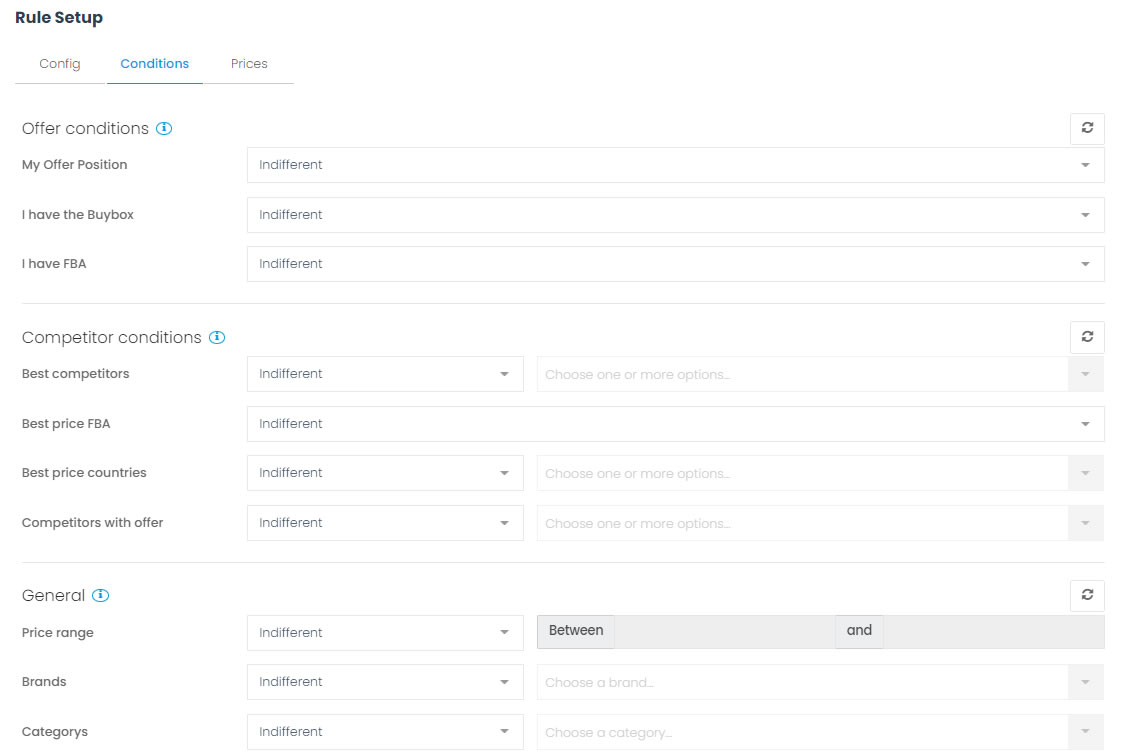Amazon’s automatic repricing tool has been operational in the Seller dashboard for many months as an option to help manage your users’ prices and in theory make their lives easier. This tool allows users to automatically update their prices based on the behaviour of competitors.
Although it has a simple interface and is free, it has certain shortcomings in its operation that make the American giant’s tool not a good option compared to other Dynamic Pricing tools. Also, don’t forget that Amazon is NOT independent when it comes to making decisions in its marketplace. The reason is simple: Amazon itself competes with the sellers on Amazon.
In this article we are going to show you that sometimes cheap is expensive and using a premium pricing tool like Boardfy offers more benefits than it seems.
800 possible rule combinations vs A few options on Amazon
Yes, you read that right. More than 800 combinations are possible with Boardfy’s Dynamic Pricing rules configurator. You can choose from numerous options for the changes to be executed, depending on whether you have the BuyBox, competitors, country of origin, brand, category or profit margin.

On Amazon you have a few options for setting automation rules, which are nowhere near the potential that Boardfy offers.

Amazon Automate Pricing: Dangerous recommendations
Price decreases encourage healthy competition between sellers as long as they are done in a controlled and orderly manner, otherwise they will not help you make money at all.
The feature that sellers miss the most in this repricing tool is the possibility of integrating costs into their products. This would only be a negative point, if it weren’t for the recommendations made by the Seller panel, which turn a simple defect into something dangerous for the sellers’ interests.

He is certainly right. Decreasing the price to €21.85 will certainly increase our sales, but at what cost? A quick check of the Boardfy dashboard gives us the answer.

At the cost of our profit margin.
As you can see, if we had heeded this recommendation, we would be losing around 0.78 euros for each sale made.
Fortunately, the market has tools such as Boardfy that allow us to integrate costs for each of the products and see the profit margin we have at all times.
In this way we can decide whether or not it is in our interest to enter into a price war with a competitor without running the risk of making a loss. In addition, if we lose money on a product that we are already selling, we can readjust its price or even deactivate it. This is one of the most important steps to take if we want our ecommerce to be profitable.








